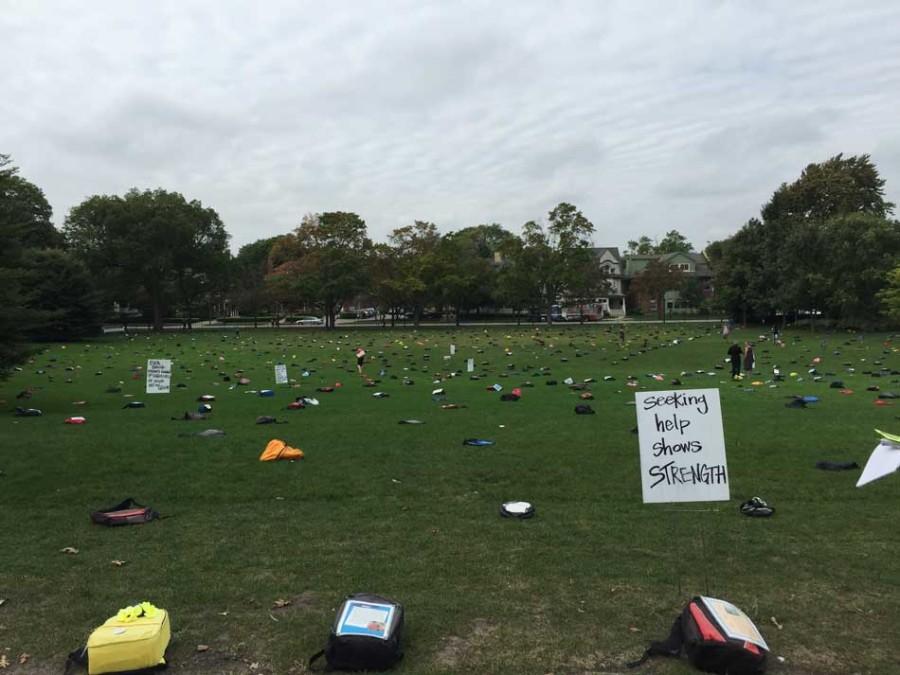Exhibit on Deering encourages conversation about mental health
Benjamin Din/Daily Senior Staffer
More than 1,000 backpacks covered Deering Meadow Monday to commemorate students who died by suicide. “Send Silence Packing,” hosted by student life offices at NU, attracted hundreds of students in an effort to promote conversations about mental health and wellness.
September 28, 2015
More than 1,000 backpacks were laid on Deering Meadow on Monday in memory of all the college students who die by suicide each year.
The traveling exhibit, Send Silence Packing, is hosted across campuses by Active Minds, a national nonprofit dedicated to raising awareness about mental health. This was the first year the exhibit stopped at Northwestern as part of an effort by NU’s Active Minds chapter, University administrators and Associated Student Government to continue conversations about suicide prevention on campus.
Weinberg senior Shannon Grogans, co-president of NU Active Minds, said the display’s powerful representation of suicide gives people a better idea of how important it is to have conversations about mental health.
“I previously had no construct of what 1,100 backpacks actually looks like,” she said. “People drop statistics all the time, but it’s much more powerful to have a visual representation.”
The event had been in the works since Spring Quarter, when Active Minds approved NU to be on the exhibit’s tour schedule, Grogans said.
Alison May, assistant dean of students, said she hopes the exhibit will encourage students to seek help for their mental health concerns.
Send Silence Packing pins stories of students who died by suicide to backpacks lying on the ground. These stories are written by friends and family members who donated the backpacks in memory of their loved ones.
“In so many of these stories, no one had any idea,” May said. “It’s so sobering to see a graveyard, literally, of backpacks. … We really hope that just even one student who might not have spoken up or realized what a big deal this was, does speak up now and gets help.”
Hundreds of students stopped by the exhibit on their way to class, Grogans said.
“The most powerful thing for me was the number of people who came up and said ‘thank you,’” she said. “You don’t think of it as like a thing you would say thank you for … It was just really moving.’”
Communication sophomore Halle Lukasiewicz said she walked by the exhibit on her way to class and decided to check it out.
“This can happen to anybody,” she said. “All of these stories really helped me figure out what (the warning) signs are and how they can be in anyone. They can be in your best friend and you may not even know.”
Email: [email protected]
Twitter: @marianaa_alfaro


